Glenmore Landing Redevelopment
Why are Calgarians so fond of a suburban shopping centre?
Glenmore Landing is a community-serving shopping centre in southwest Calgary owned by RioCan, a real estate investment trust whose portfolio includes office, retail and residential assets across Canada.
Because of the site’s intensification potential, RioCan has decided to transform the mall into a mixed-use, transit-oriented development, bringing much-needed density to an underutilized location; as it did in Brentwood over a decade ago, and is currently working towards in Belvedere (why all new shopping centres aren’t required to include a residential component from the get go, is beyond me).
Unsurprisingly, the neighbours aren’t thrilled.
Citing the usual concerns — namely changes to the community’s character, increased traffic, and the loss of green space — detractors have a weak argument against the redevelopment of this site.
But that doesn’t mean RioCan’s proposal couldn’t be better.
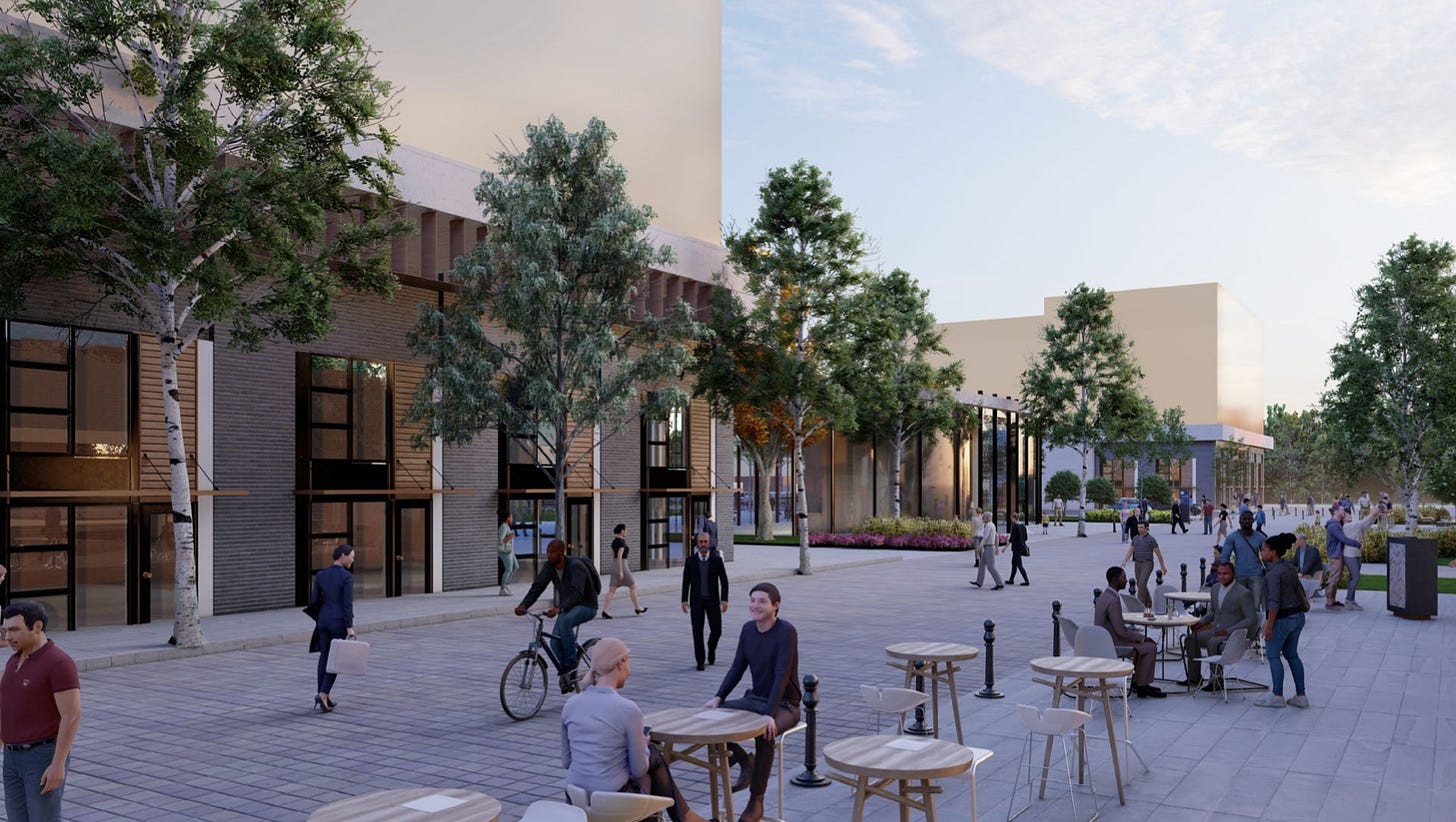
Located at the confluence of five residential neighbourhoods built-out mostly in the ‘60s and ‘70s — Bayview, Pump Hill, Haysboro, Chinook Park, and Eagle Ridge — the businesses in this mall include a mix of retail and personal services that can be accessed not only by car, but also by foot, bike and transit. Despite this, the site remains a car-oriented shopping centre, and a large share of its footprint is for the exclusive use of cars.
A community hub of sorts, the 10-acre mall, is currently surrounded by 5.5 acres of the kind of landscaped space that’s more ornamental than functional: a lawned field, and a scattering of 69 trees, including spruce, elm, and poplar. In alignment with its growth strategy, the City of Calgary has agreed to sell this land to RioCan to build high-density housing.
However, this pseudo-bucolic sight plays an important role in signalling passersby not only that this is the suburbs, but that this is a nice middle-class one.
The aesthetic evoked by the green space that surrounds Glenmore Landing, symbolizes not only an appreciation for nature, but also a rejection to the ailments of urban living, namely pollution and congestion. (Never mind the roads needed to get there.)
But a lot has changed in our city since the shopping centre was built in the early 1980s. And maintaining 5.5 acres of lawn is a wasteful use of land.
As more and more people flock to Calgary, increasing density in established neighbourhoods has become a necessity. This is especially true in well-connected, amenity-rich enclaves like Glenmore Landing, which makes the site’s redevelopment as a dense mixed-use community a no-brainer.
Intensification, however, threatens to undo four decades of successful — though classist — placemaking, for lack of a better word, that’s created a strong sense of place amongst neighbours, and they’re now attached not only to the site, but to its meaning.
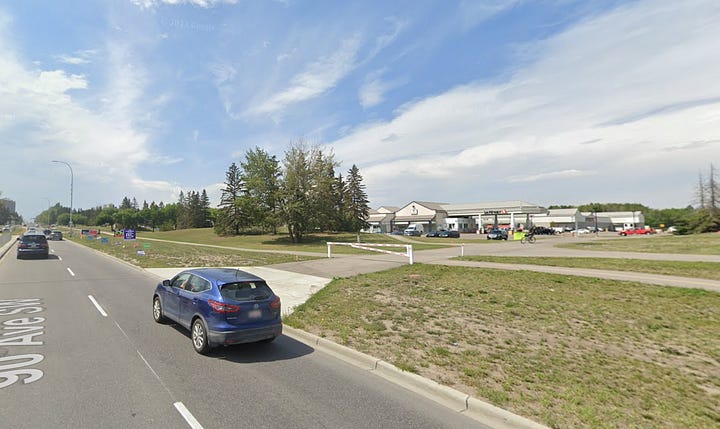
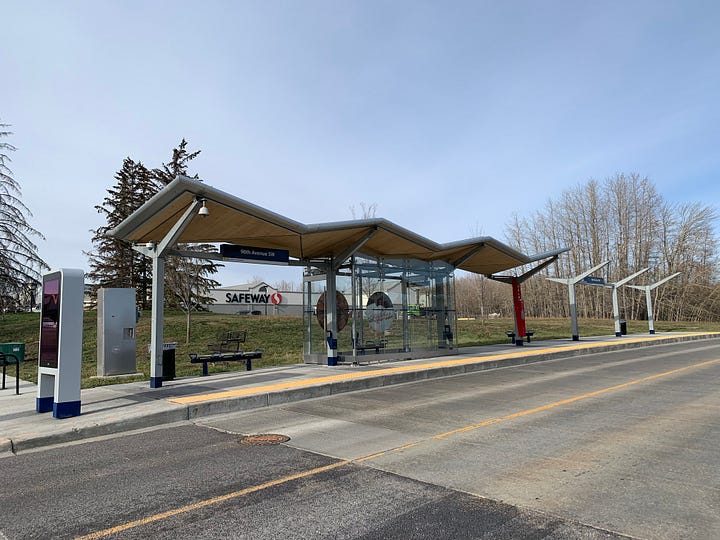
The communities surrounding Glenmore Landing have flaunted access to nature since their conception. In the early ‘70s, access to the reservoir, the Calgary Yacht Club, and landscaping were key selling points for homes in Bayview; while in Pump Hill, views of the mountains were characterized by realtors as a unique perk.
Not much has changed since. Access to the Glenmore reservoir and surrounding pedestrian and wheeling pathways remain attractive features in an area populated by generic bungalows and McMansions.
For this reason, neighbour opposition to the construction of six 30-storey tall towers shouldn’t surprise anyone.
Bringing the city to the suburbs remains an unpopular move. Though we should get used to it, because nearly 20 per cent of our city’s neighbourhoods were developed in the ‘60s and ‘70s — and their population is dwindling.
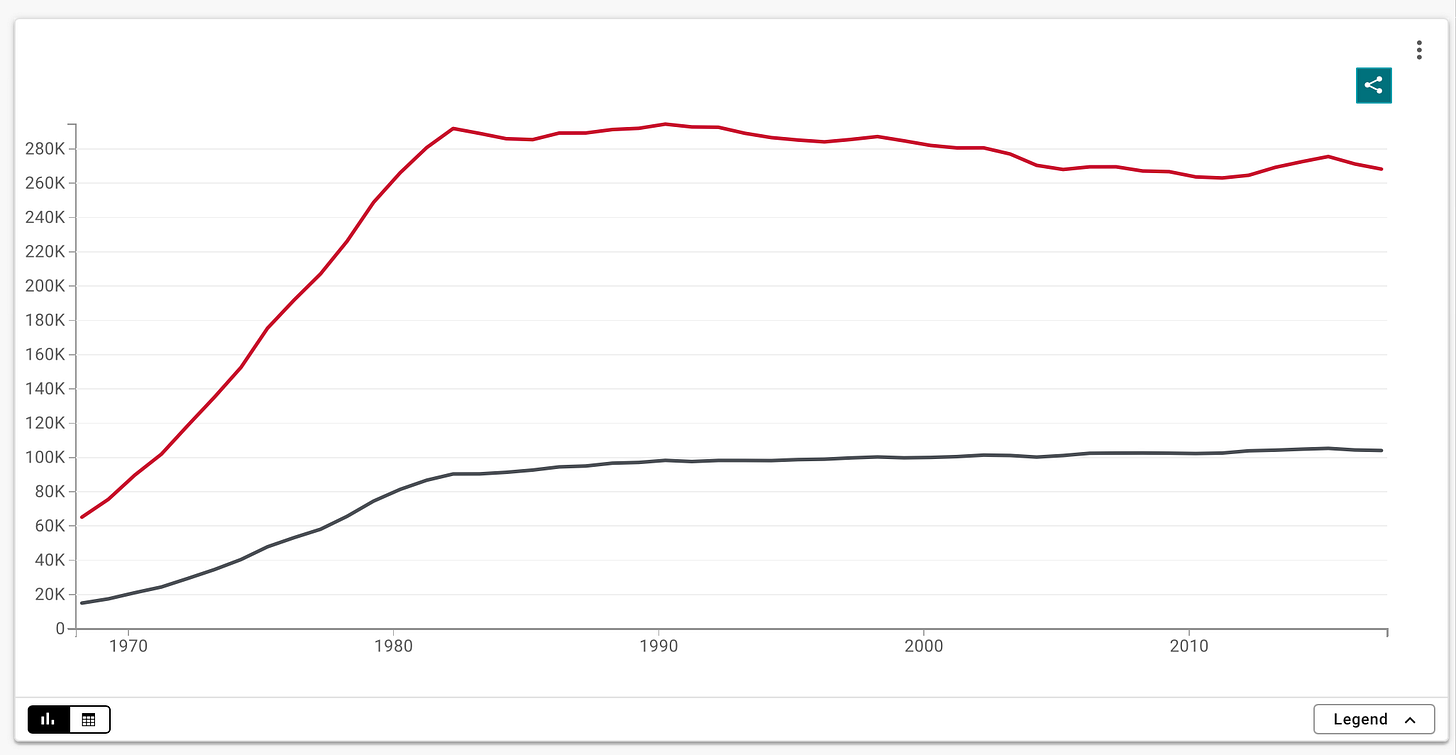
But building any kind of density in any form doesn’t always result in the kind of community Calgarians strive to live in. If the city and RioCan are going to go through the hassle of gaining community buy-in, why not make Glenmore Landing an example of how to do things right?
While at this point RioCan’s proposal is merely conceptual, the organization of the space seems efficient, yet unimaginative. The site’s layout remains suburban and car oriented, though less evidently so.
The location of the towers, two along 14th St and four along 90th Ave, create a distinct ‘inside’ and ‘outside’ environment that can be perceived as a direct confrontation to the surrounding communities.
The proposed towers wall off the unsightly roadways, and contain a more vibrant environment within, creating an effect akin to that of a shopping mall, where what’s outside, or how you get there, is of little importance — the interior is what matters.
Within the enclosure created by the siting of the 115-metre tall towers, our current aspirations for urban living are well executed, and the proposed vision for the site is almost indistinguishable from any other urbanist community (e.g. University District, East Village): A wide pedestrianized “high street” that, lined with shops and cafés, invites visitors and residents to wander and consume; part and parcel of the “sidewalk ballet” Jane Jacobs said makes for a good public realm. (True to the site’s suburban nature, parking remains plentiful, and vehicle access remains unchanged.)
Although the proposal justifies the location of the towers as a “beacon gesture,” high-rise buildings are rarely a welcoming sight. We need only look at University City for evidence.
In 2012, RioCan began the transformation of Brentwood Village into a transit-oriented community. Comprised by six brightly coloured glass towers with ground floor retail, the site’s only memorable feature is its density, and does little for the adjacent neighbourhood, which remains disconnected from the new development.
Similarly, Glenmore Landing is more of an enclosed mall than an addition to the vibrancy of the surrounding neighbourhoods.
While existing residents will get to experience the added traffic more density could create — at least until fast and frequent transit becomes the norm in our city — it’s the future residents who are more likely to reap the benefits.
If RioCan’s proposal moves forward, balancing the tensions between the needs and aspirations of those within and those without the new community should be the next challenge for designers to tackle.
How they do this will not only facilitate neighbour buy-in for this specific project, but also for similar proposals elsewhere in Calgary.
Suburban shopping centres in our city are ripe for redevelopment, and a failure to effectively integrate them with their surroundings could compromise further densification efforts, and that would be a significant loss for Calgarians.
Reluctantly yours,
Ximena.
p.s. as I was finishing off this post, Sam Hester shared some important insider knowledge with me: the original design of Glenmore Landing Shopping Centre was inspired by Granville Island, and it even won a Canadian-shopping-centre-of-the-year award—who knew?
Stuff i’ve written this month
People love living in co-ops — so why did Canada kill the program?
Ricochet
Edmonton’s roadway renewal program looks beyond the automobile
The Globe and Mail
Book review: Ricardo Tranjan’s “The Tenant Class”
Alberta Views


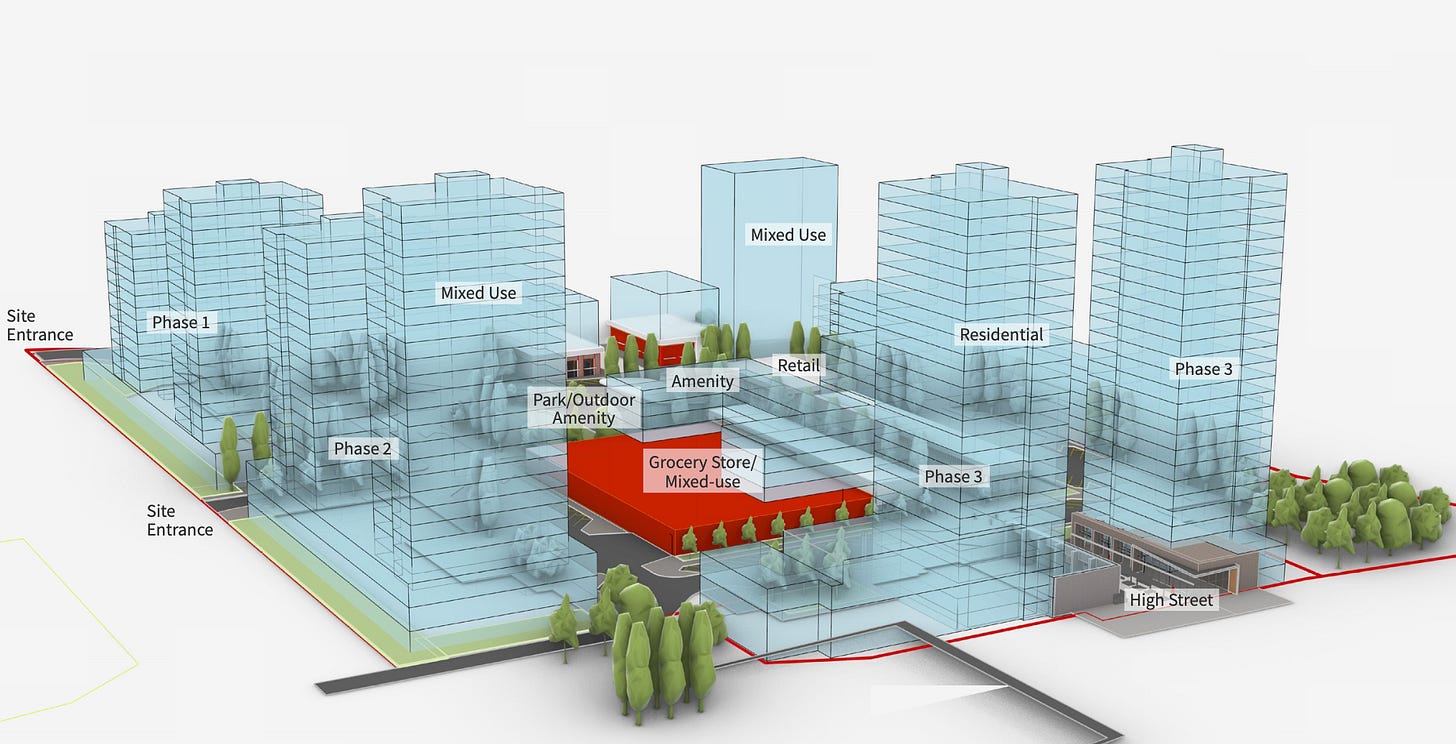
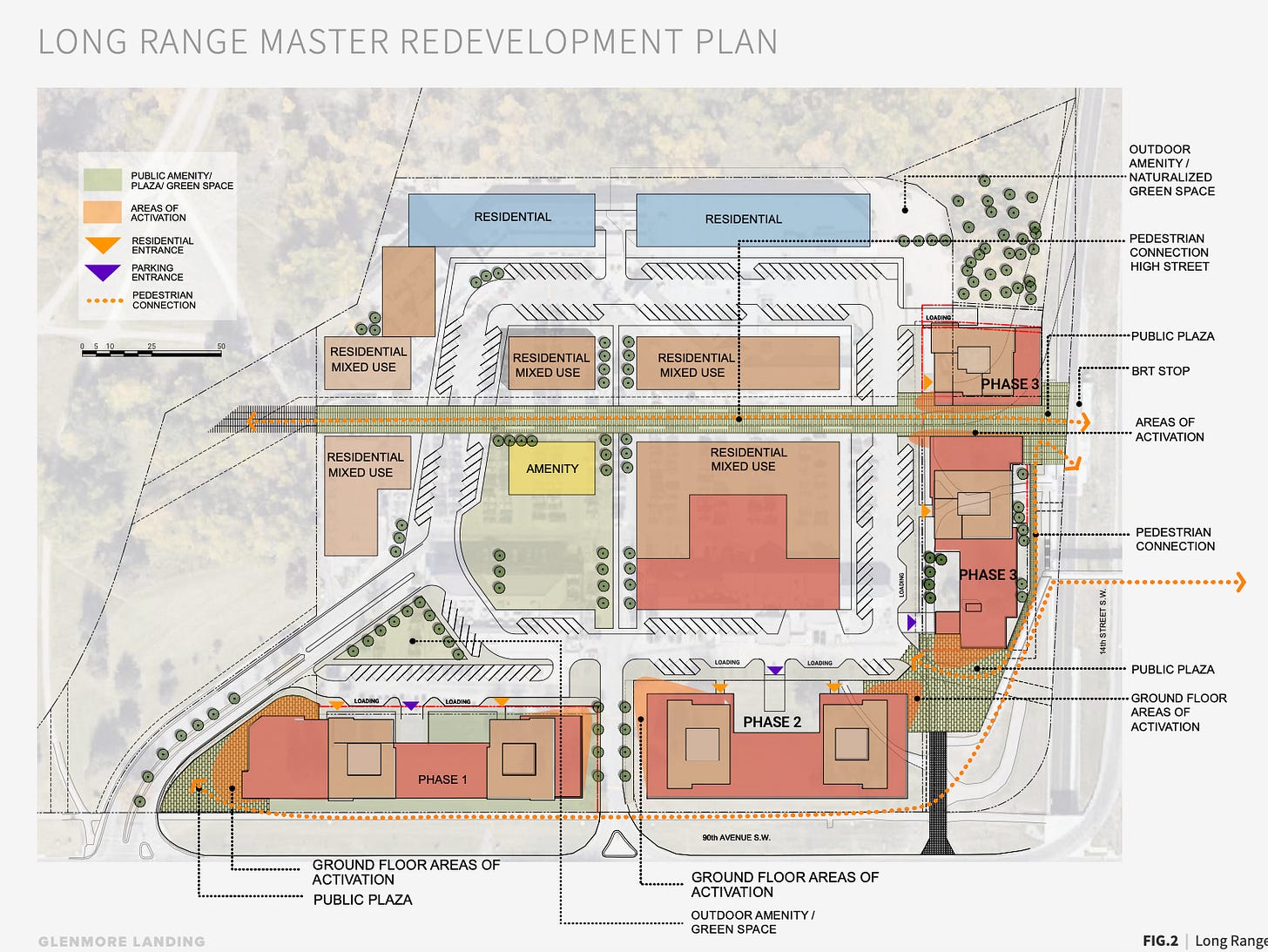
It's interesting to me that there was a lot of initial opposition to Glenmore Landing when it was first built! In particular, people were upset that it was going to be blue. My dad and his colleagues (the architects for the project) drove around the neighbouring communities taking photographs of residential elements that were blue, in order to prove that a blue shopping mall would not be totally inconsistent with the community standards. But now, the same development that was met with so much resistance in the early 80s, has become a familiar landmark that people want to keep the way it is. Thanks for writing about this, it has been fun to learn about the continuing story of this part of Calgary!
Although I agree Brentwood's redevelopment could be _better_, I still think it's an improvement overall. How is it "disconnected" from the surrounding community?
Or, what would you do differently to connect it?